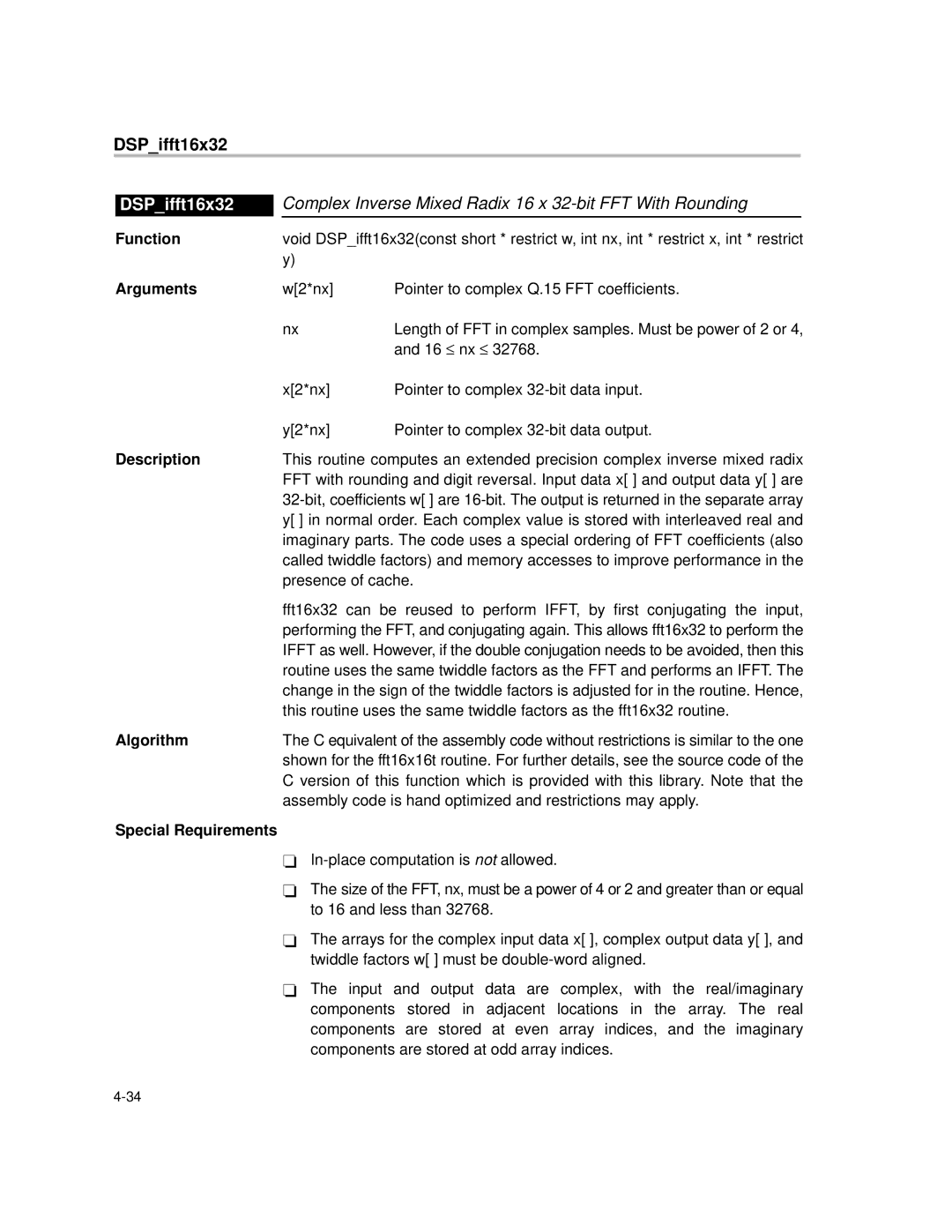DSP_ifft16x32
DSP_ifft16x32 | Complex Inverse Mixed Radix 16 x | |||
Function |
|
|
| |
| void DSP_ifft16x32(const short * restrict w, int nx, int * restrict x, int * restrict | |||
|
| y) |
|
|
Arguments |
| w[2*nx] | Pointer to complex Q.15 FFT coefficients. | |
|
| nx | Length of FFT in complex samples. Must be power of 2 or 4, | |
|
|
| and 16 ≤ nx ≤ 32768. | |
|
| x[2*nx] | Pointer to complex | |
|
| y[2*nx] | Pointer to complex | |
Description |
| This routine computes an extended precision complex inverse mixed radix | ||
|
| FFT with rounding and digit reversal. Input data x[ ] and output data y[ ] are | ||
|
| |||
|
| y[ ] in normal order. Each complex value is stored with interleaved real and | ||
|
| imaginary parts. The code uses a special ordering of FFT coefficients (also | ||
|
| called twiddle factors) and memory accesses to improve performance in the | ||
|
| presence of cache. | ||
|
| fft16x32 can be reused to perform IFFT, by first conjugating the input, | ||
|
| performing the FFT, and conjugating again. This allows fft16x32 to perform the | ||
|
| IFFT as well. However, if the double conjugation needs to be avoided, then this | ||
|
| routine uses the same twiddle factors as the FFT and performs an IFFT. The | ||
|
| change in the sign of the twiddle factors is adjusted for in the routine. Hence, | ||
|
| this routine uses the same twiddle factors as the fft16x32 routine. | ||
Algorithm |
| The C equivalent of the assembly code without restrictions is similar to the one | ||
|
| shown for the fft16x16t routine. For further details, see the source code of the | ||
C version of this function which is provided with this library. Note that the assembly code is hand optimized and restrictions may apply.
Special Requirements
-
-The size of the FFT, nx, must be a power of 4 or 2 and greater than or equal to 16 and less than 32768.
-The arrays for the complex input data x[ ], complex output data y[ ], and twiddle factors w[ ] must be
-The input and output data are complex, with the real/imaginary components stored in adjacent locations in the array. The real components are stored at even array indices, and the imaginary components are stored at odd array indices.
